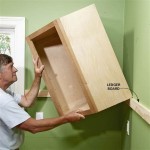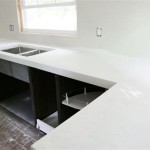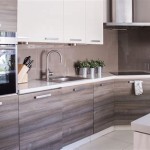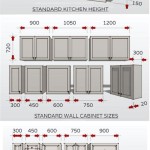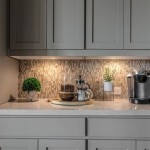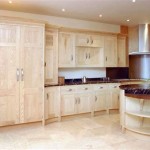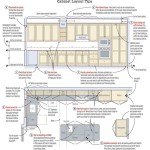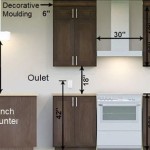What Are Mobile Home Kitchen Cabinets Made Of?
Mobile home kitchen cabinets, while serving the same fundamental purpose as those in traditional homes, often differ significantly in their construction materials. This difference stems from a variety of factors, including cost considerations, weight limitations, and the unique construction challenges inherent in mobile home manufacturing. Understanding the materials used in these cabinets is crucial for anyone looking to renovate, repair, or simply gain insight into the construction of their mobile home.
The selection of materials for mobile home kitchen cabinets is a balancing act between durability, affordability, and weight. Manufacturers must carefully choose options that meet budgetary constraints while also providing adequate structural integrity for cabinets that will withstand transportation and daily use. The lightweight nature of these materials is also essential to minimize the overall weight of the mobile home, which impacts fuel efficiency during transportation and adherence to weight regulations.
Particleboard and MDF: Common Core Materials
Particleboard and Medium-Density Fiberboard (MDF) are two of the most prevalent materials found in mobile home kitchen cabinets. Both are engineered wood products created by compressing wood particles with adhesives. While they share similarities, there are key distinctions that influence their suitability for different cabinet components.
Particleboard is composed of coarser wood particles than MDF. This makes it less dense and generally less expensive. In mobile home kitchen cabinets, particleboard is often used for the less visible components, such as the cabinet boxes or shelving. Its lower cost makes it an attractive option for manufacturers seeking to reduce overall production expenses. However, particleboard is also more susceptible to moisture damage than MDF, and it does not hold screws as securely.
MDF, on the other hand, is made from finer wood fibers, resulting in a denser and more uniform material. It is generally stronger and more resistant to warping than particleboard. MDF is frequently used for cabinet doors and drawer fronts, where a smoother surface and greater structural stability are desired. It also provides a better surface for painting or applying veneers.
The use of particleboard and MDF in mobile home kitchen cabinets is often a source of debate. While they offer affordability and ease of manufacturing, their susceptibility to water damage is a significant concern. When exposed to moisture, these materials can swell, crumble, and lose their structural integrity. This is particularly problematic in kitchens, where spills and humidity are common. To mitigate this risk, manufacturers often apply sealants and laminates to protect the core materials from moisture penetration.
Laminates and Thermofoil: Surface Finishes
The core materials of mobile home kitchen cabinets, whether particleboard or MDF, are typically covered with a surface finish. These finishes serve both aesthetic and protective purposes, providing a durable and visually appealing exterior. Laminates and thermofoil are two of the most common surface finishes used in mobile home cabinetry.
Laminates are thin sheets of plastic that are bonded to the core material using adhesives. They are available in a wide range of colors, patterns, and textures, offering a high degree of design flexibility. Laminates are relatively durable and resistant to scratches and stains, making them a practical choice for kitchen cabinets. High-Pressure Laminate (HPL) is a more durable and expensive option compared to Low-Pressure Laminate (LPL), but both are commonly found in mobile home construction.
Thermofoil is a type of vinyl that is heat-sealed to the core material. It creates a seamless, smooth surface that is easy to clean. Thermofoil is also available in various colors and styles, including those that mimic the look of wood grain. However, thermofoil is more susceptible to heat damage than laminate. Prolonged exposure to high temperatures, such as from an oven or toaster, can cause the thermofoil to peel or bubble.
The choice between laminate and thermofoil often depends on the desired aesthetic and the budget constraints of the manufacturer. Laminates tend to be slightly more expensive but offer greater durability and heat resistance. Thermofoil, on the other hand, provides a cost-effective way to achieve a smooth, modern look.
Solid Wood Alternatives and Accents
While particleboard, MDF, laminates, and thermofoil are the most common materials in mobile home kitchen cabinets, there are instances where solid wood or wood veneer is used. These materials are typically reserved for accent pieces or higher-end models due to their increased cost and weight.
Solid wood, such as oak, maple, or pine, may be used for cabinet doors, drawer fronts, or decorative trim. Solid wood offers a natural beauty and durability that is unmatched by engineered wood products. However, solid wood is also more susceptible to warping and cracking, especially in environments with fluctuating humidity levels. For this reason, solid wood components in mobile home cabinets are often carefully sealed and finished to protect them from moisture damage.
Wood veneer consists of thin slices of solid wood that are glued to a substrate, typically particleboard or MDF. Wood veneer provides the aesthetic appeal of solid wood at a lower cost and with reduced weight. It also offers greater stability than solid wood, as the substrate prevents warping and cracking. Wood veneer is often used for cabinet doors and drawer fronts in mobile home kitchens, providing a touch of elegance without significantly increasing the overall cost or weight.
The use of solid wood or wood veneer in mobile home kitchen cabinets is often seen as a mark of quality and craftsmanship. These materials can significantly enhance the aesthetic appeal of the kitchen and increase the overall value of the mobile home. However, it is important to note that even with proper care and maintenance, solid wood and wood veneer are still susceptible to damage from moisture and extreme temperatures.
The hardware used in mobile home kitchen cabinets, such as hinges, drawer slides, and knobs, are typically made of metal or plastic. The quality of the hardware can significantly impact the functionality and longevity of the cabinets. Inexpensive hardware is prone to breaking or malfunctioning, while higher-quality hardware provides smoother operation and greater durability. Often, manufacturers will use lower-grade hardware to keep costs down, something a homeowner may want to upgrade when renovating.
Mobile home kitchen cabinets often incorporate design features that maximize space and functionality within the compact confines of the home. These features may include pull-out shelves, lazy susans, and other space-saving accessories. The effectiveness of these features depends on the quality of the materials used and the overall design of the cabinets.
The materials used in mobile home kitchen cabinets are constantly evolving as manufacturers seek to improve durability, reduce costs, and enhance aesthetics. New materials and technologies are emerging that offer innovative solutions for addressing the unique challenges of mobile home construction. For example, some manufacturers are experimenting with alternative wood composites that are more resistant to moisture damage and offer greater structural stability. Others are exploring the use of sustainable materials, such as bamboo or recycled plastics, to reduce the environmental impact of mobile home construction.
Ultimately, the choice of materials for mobile home kitchen cabinets depends on a complex interplay of factors, including cost, weight, durability, and aesthetic preferences. Understanding the properties and limitations of different materials is essential for making informed decisions about cabinet selection, renovation, and maintenance. Regular cleaning and maintenance can extend the lifespan of mobile home cabinets and minimize the risk of damage from moisture and wear.

How To Update Mobile Home Cabinets Living

Mobile Home Kitchen Cabinets The Do S And Don Ts Mhvillager

Double Wide Mobile Home Kitchen Cabinets Rocky Hedge Farm

Mobile Home Diy Kitchen Makeover

Double Wide Mobile Home Kitchen Cabinets Rocky Hedge Farm

Double Wide Mobile Home Kitchen Cabinets Rocky Hedge Farm

Double Wide Mobile Home Kitchen Cabinets Rocky Hedge Farm

Mobile Home Kitchen Cabinets The Do S And Don Ts Mhvillager

Clayton Built Home Cabinet Care Studio

Clayton Built Cabinet Options Studio
Related Posts

